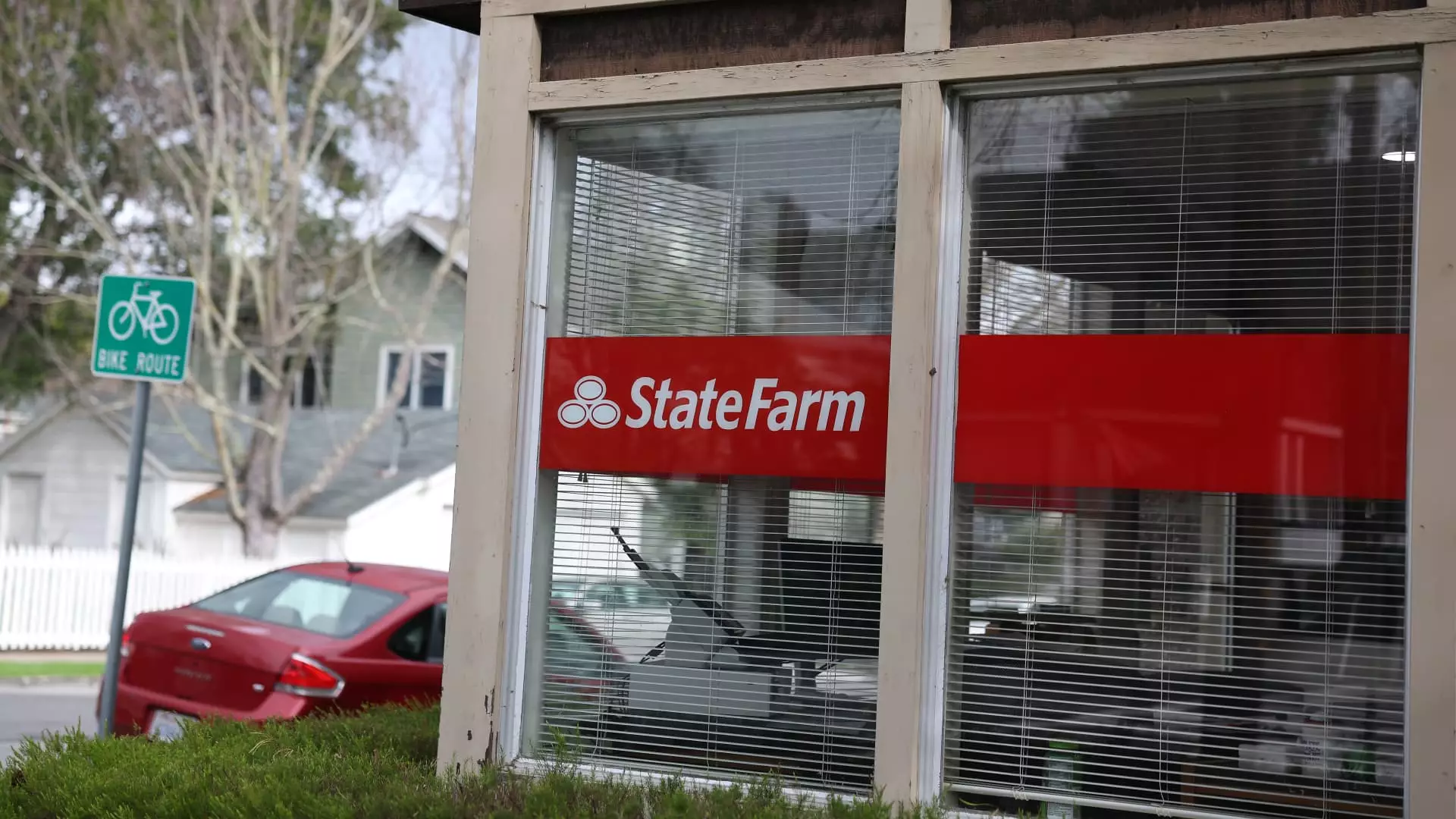In a rapidly escalating crisis, State Farm’s attempt to raise rates for California homeowners reflects a dire financial landscape shaped by unprecedented natural disasters, particularly the devastating wildfires of January. As the state’s largest property insurer, the company is grappling with an urgent need to stabilize its finances following losses that have shattered records. The situation isn’t just precarious; it is alarmingly reminiscent of the Titanic plowing ahead toward an impending catastrophe—dramatic, theatrical, and all too real for the millions of Californians at risk of being left adrift without lifeboats.
State regulators, faced with a colossal dilemma, must navigate the perilous waters of public sentiment while ensuring the insurer’s viability. With approximately 3 million policies in force and a staggering payout of over $2.75 billion related to fire claims, the stakes have never been higher. Insurers in California, like State Farm, find themselves ensnared within a vicious cycle: rising claims, shrinking profits, and the overwhelming pressure to maintain market share in a flood of natural disasters, each one more devastating than the last.
Economic Imperatives Versus Consumer Rights
The crux of the issue lies in the delicate balance between economic imperatives and consumer rights. As State Farm pushes for a 17% increase in homeowner rates—even after initially seeking an alarmingly high 22%—the company claims that these increases are necessary to avert financial oblivion and maintain its operational viability. Yet, this case poses poignant questions about justice and affordability for Californians. Homeownership should not feel like an untenable burden; instead, it should be viewed as a foundation for personal and communal well-being.
Critics, like the advocacy group Consumer Watchdog, vehemently contest these proposed hikes. They argue that State Farm has not adequately justified the need for such increases, comparing the fluctuating rate requests to a game of chance. If a company like State Farm, with its vast resources, can’t demonstrate sufficient grounds for these increases, does it reflect on its management, or is it indicative of a flawed system that prioritizes corporate survival over consumer welfare?
Structural Inequities in Insurance
From a broader perspective, this unfolding drama signals systemic inequities within California’s insurance landscape. The state has created a framework aiming to streamline rate approvals while incorporating catastrophe modeling. Yet the reality remains that many insurers, like State Farm, have removed themselves from riskier areas, exacerbating an already troubling insurance crisis. The idea that a state’s insurer of last resort, the FAIR plan, is ballooning in capacity to absorb those dropped from traditional lines sends chilling signals about stability and accessibility.
The irony in this crisis is that as climate change intensifies natural disasters, forcing policy lenders to rethink their methodologies, those most affected—homeowners—are left scrambling for the assurance that they will be able to recover from losses. The ongoing narrative showcases a disconnect between the needs of consumers and the operational realities of insurers. State Farm’s decision to cease new homeowners insurance policies demonstrates a retreat rather than a progressive solution.
A Call for Responsibility and Reform
For the California insurance market to transition from a state of crisis to one of stability, reform must address the fundamental inequities at play. There is a clear need for a collaborative approach between insurers, regulators, and advocacy groups to ensure that consumer interests are not sidelined in favor of corporate survival. While State Farm’s financial needs are valid, these needs must not eclipse the rights of homeowners in an industry that fundamentally aims to provide security against losses.
Moreover, state bodies must monitor the implementation of a “Sustainable Insurance Strategy” to ensure it serves its purpose. Its intention to create a robust insurance market that can withstand the rising tide of climate-related risks must actualize into tangible benefits for consumers. Without a collective re-alignment of goals—one that mandates responsibility, transparency, and fairness—the entire framework may crumble, leaving millions with rising costs and diminishing options.
The existential dilemmas faced by State Farm expose a broken narrative within California’s insurance framework. As stakeholders gather to address this legal and moral crossroads, all parties must prioritize equity and accountability, ensuring that homes—and the dreams they encompass—are protected, rather than threatened, by the very policies designed to safeguard them.

Leave a Reply